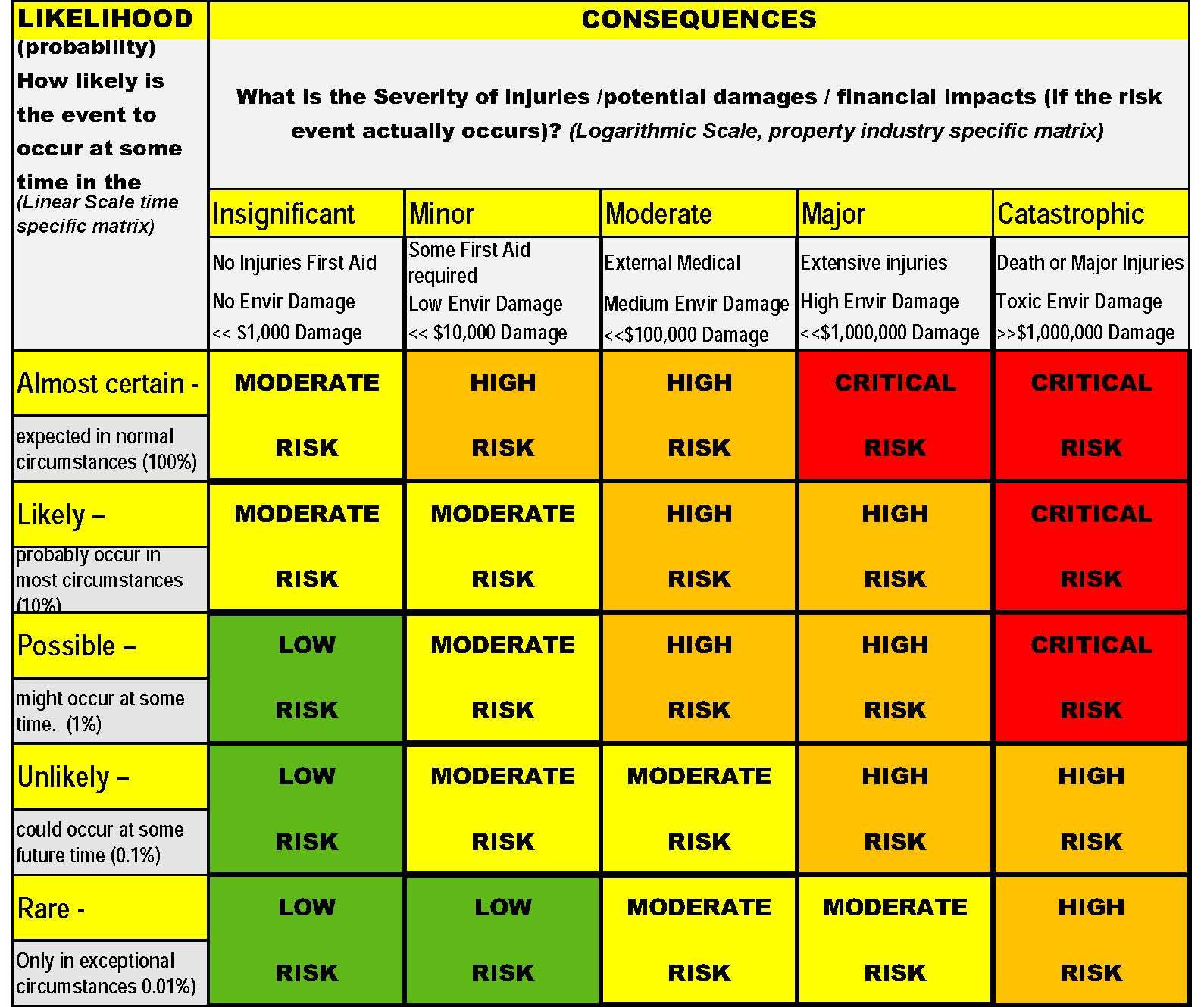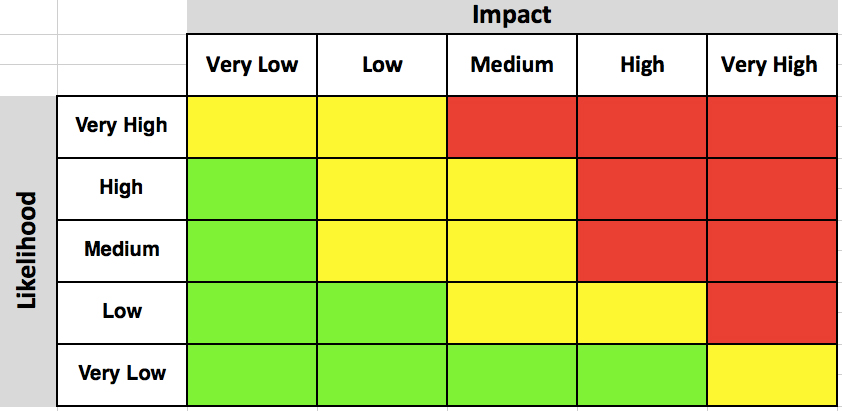

This is the bottom-line measure used to prioritize issues and identify red flags.

The risk impact is the overall level of risk based on how likely it is to happen and how bad the consequences would be.
RISK PROBABILITY IMPACT RATING MATRIX FREE
With TeamGantt’s free risk assessment matrix template, you have three options for assessing the probability of an event. And of course, you’re going to want to address impending risks first. Some risks are more likely to happen than others. Generally unacceptable: Think of this risk as a sucker punch that sends your project spinning.Tolerable: This risk will hurt, but there’s no doubt your project will recover.Acceptable: You’ll hardly feel an impact if this risk occurs.

We’ve broken risk severity down into three possible answers: Have you ever asked yourself, What’s the worst that could happen? This simple question helps you gauge the severity of a risk you’re about to take. Let’s take a look at the different scales and ratings that make up a risk assessment matrix. That makes it easy to prioritize issues and take action where it’s needed most to keep your project on course. His researches interests include risk management, Scientometrics.A risk assessment matrix enables you to calculate project risk in a snap by identifying all the things that could go wrong and weighing its potential damage. He has published 50 articles, among which more than 20 articles are indexed by the FMS journal rating guide, such as the important journal Risk Analysis, European Journal of Operational Research. He is a member of the Youth Innovation Promotion Association of Chinese Academy of Sciences and severs as the academic editor of the Innovation, associate editor of the Chinese Journal of Management Science. He has been awarded "2020 Elsevier Highly Cited Chinese Researchers", "China Youth Science and Technology Award", "National Outstanding Science and Technology Worker of China", "Excellent Tutor Award of Chinese Academy of Sciences", and won 2 first prizes and 4 second prizes of provincial and ministerial Natural Science/Technology Progress Awards in China.ĭengsheng Wu is an associate professor at the Institutes of Science and Development Chinese Academy of Sciences. He has published more than 130 papers and 6 monographs, including Risk Analysis, Annals of Tourism Research, and European Journal of Operational Research. His research interests include risk management and big data analysis. He is also the executive vice dean of the School of Economics and Management at the UCAS and the executive member and secretary-general of the International Academy on Information Technology and Quantitative Management (IAITQM). Jianping Li is a distinguished professor at the University of Chinese Academy of Sciences (UCAS). His researches interests include risk management, supply chain management. from the University of Chinese Academy of Sciences. He received his bachelor's degree from the University of Science and Technology of China, and he received his Ph.D. Chunbing Bao is an associate professor working in the Department of Information System and Supply Chain Management, Shandong University, China.


 0 kommentar(er)
0 kommentar(er)
